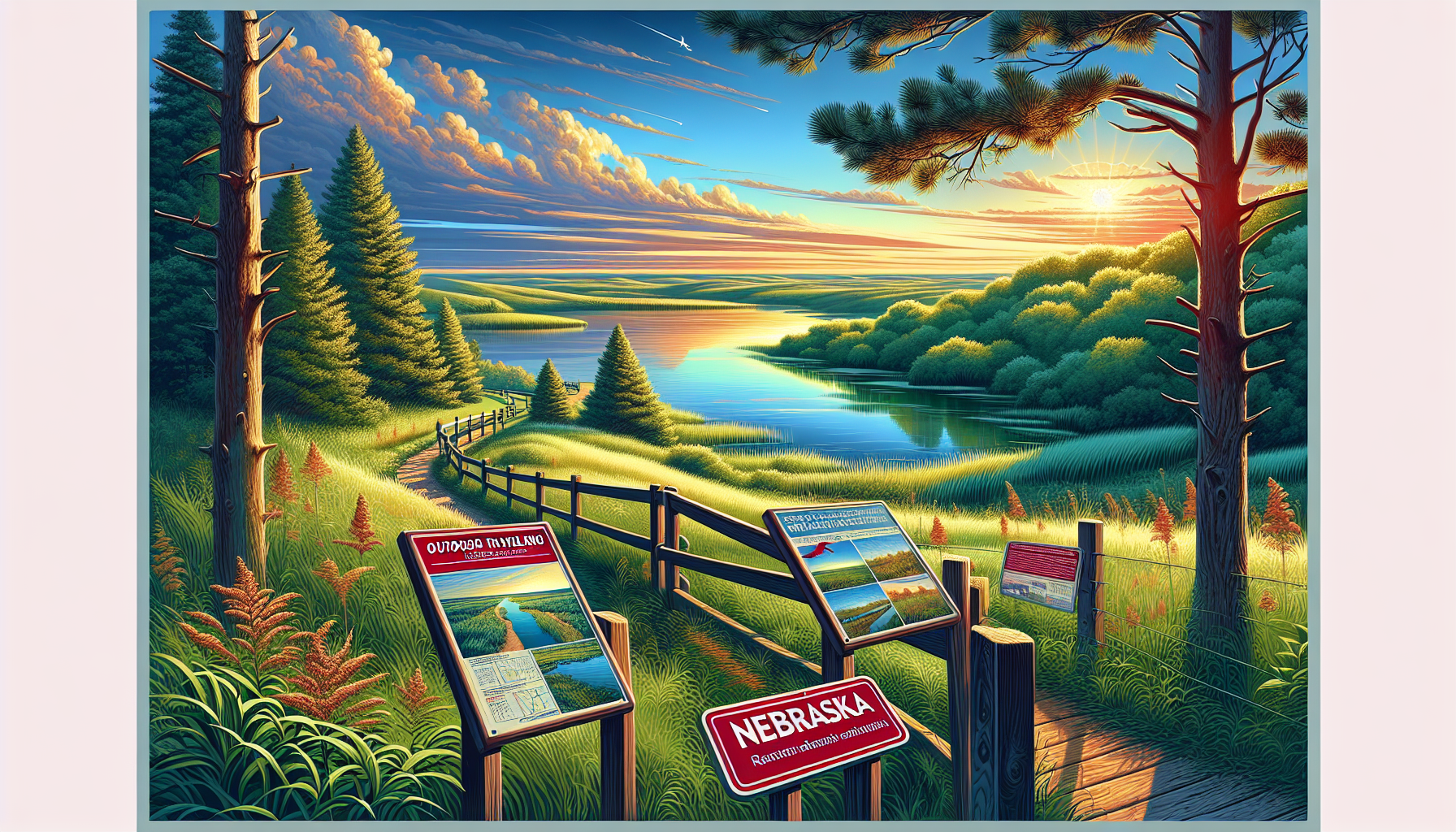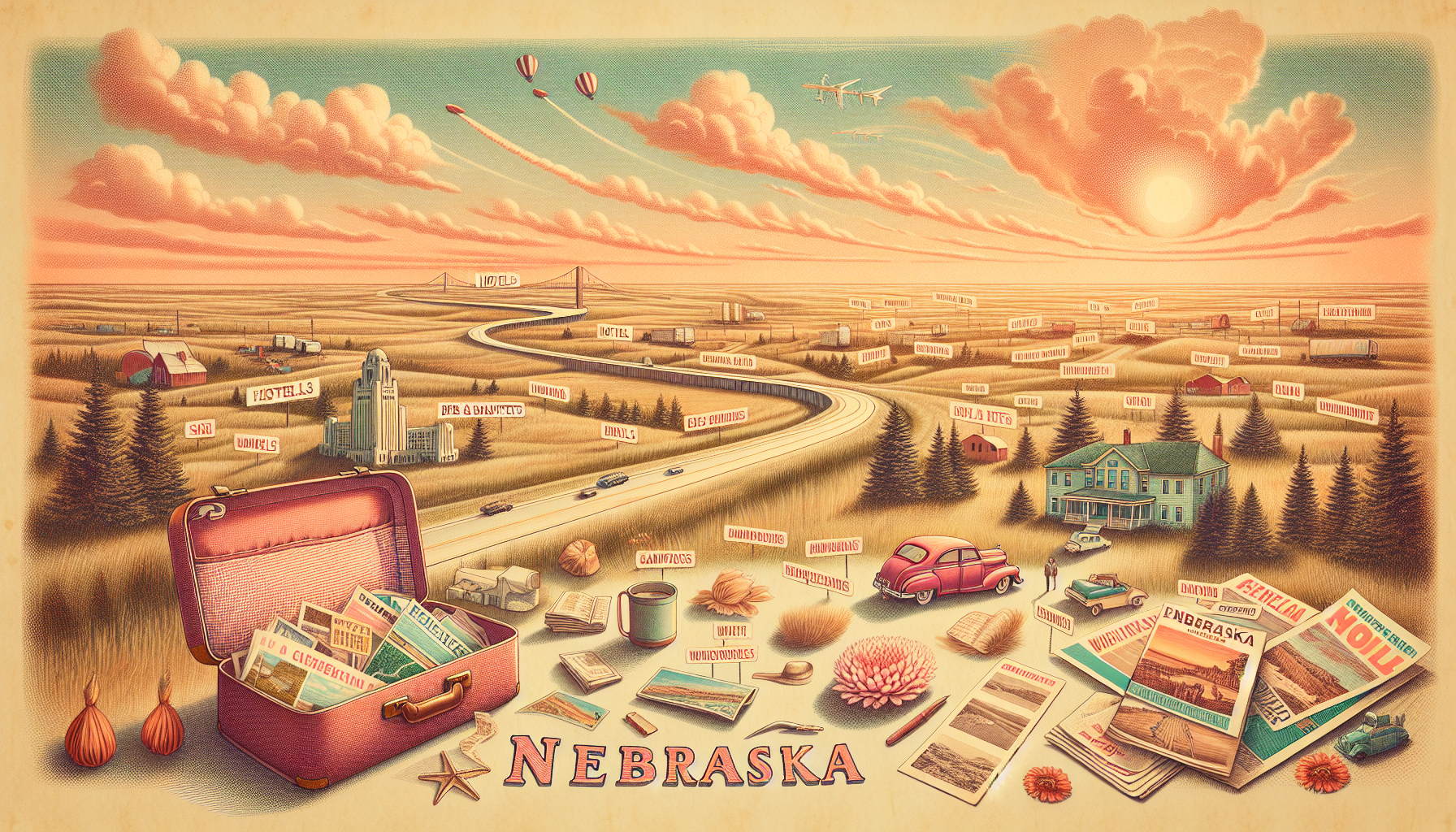Traveling Through Nebraska: Wildlife Migration Corridors

As the Great Plains of North America experience seasonal changes, numerous wildlife species embark on remarkable journeys to adapt to the shifting environment. For eons, these animals have traversed various routes, establishing wildlife migration corridors. These corridors are critical for ensuring the survival and genetic diversity of species. Nebraska, a state strategically situated in the heart of the Great Plains, plays a vital role in the long-distance migrations of many species, including the sandhill crane, monarch butterfly, and pronghorn antelope.
The significance of wildlife migration corridors extends beyond ecology; understanding these routes can aid humans in conservation efforts, land-use planning, and even climate change mitigation. Human-altered landscapes can seriously hinder migration patterns, emphasizing the need for migratory corridors to retain functional connectivity. In Nebraska, the Rainwater Basin serves as a crucial stopover for millions of migratory birds, including waterfowl and shorebirds. However, human activities like agricultural expansion and urbanization have largely fragmented this habitat, necessitating conservation interventions.
The prairie ecosystems of the Great Plains encompass various public and private lands. Wildlife corridors can traverse a combination of these areas, crossing national wildlife refuges, national parks, state wildlife areas, and ranchlands. The recovery of the Whooping Crane, once on the brink of extinction, illustrates the importance of conserving corridors. Today, the species critically depends on a narrow migratory corridor between the Platte River in Nebraska (and adjacent areas of Kansas and Colorado) and its breeding grounds in Canadian Wood Buffalo National Park. The reintroduction of captive-bred cranes in 2001 has expanded this narrow corridor, now spanning around 4,000 miles.
When creating corridors, researchers rely on maps, historical observations, and extensive studies using, for example, satellite imagery and tracking devices to establish the vital habitat connections between critical stopover points and crucial breeding or wintering sites. Human-dominated landscapes will require innovative conservation approaches, like wildlife-friendly agricultural practices and strategic placement of wildlife corridors. As climate continues to change, further pressing corridor needs is a greater probability of natural corridors that were used historically being displaced or disrupted.
Important wildlife corridors include The Sagebrush Steppe, spanning six western states including Wyoming and Idaho, that is critical to movements of pronghorn and sage grouse. Other corridor examples are the Rio Grande wildlife corridor, being a water conduit for many terrestrial species of wildlife in west Texas and eastern New Mexico. There are examples where corridors are even being employed as conservation tools to reintroduce extinct species or boost depleted herd populations back into native habitats.
In many states and in many private land use scenarios, they can also promote cross-jurisdictional cooperation along corridors in attempts to safeguard ecosystem diversity. Wildlife migration corridors can aid in tackling critical issues involving local extinctions within species by preserving the corridors needed for necessary wildlife roaming. Ultimately, ongoing human activity needs to consider natural corridors when developing the landscape to prevent unforeseeable effects and disruptions by human-infused modifications to wildlife migration patterns.
Both non-profit institutions and governments can create public policies and programs that include proactive evaluation and improvement solutions of the wildlife corridors. As examples, at Nebraska public lands, conservation efforts assist wildlife that travel key corridors using native grassland restoration.
Important state-wide policy also prioritizes enhancing vital ecosystems through habitat recovery – state-federal collaborations often see successful corridor identification via state-of-the-art high-resolution mapping.
The significance of wildlife migration corridors extends beyond ecology; understanding these routes can aid humans in conservation efforts, land-use planning, and even climate change mitigation. Human-altered landscapes can seriously hinder migration patterns, emphasizing the need for migratory corridors to retain functional connectivity. In Nebraska, the Rainwater Basin serves as a crucial stopover for millions of migratory birds, including waterfowl and shorebirds. However, human activities like agricultural expansion and urbanization have largely fragmented this habitat, necessitating conservation interventions.
The prairie ecosystems of the Great Plains encompass various public and private lands. Wildlife corridors can traverse a combination of these areas, crossing national wildlife refuges, national parks, state wildlife areas, and ranchlands. The recovery of the Whooping Crane, once on the brink of extinction, illustrates the importance of conserving corridors. Today, the species critically depends on a narrow migratory corridor between the Platte River in Nebraska (and adjacent areas of Kansas and Colorado) and its breeding grounds in Canadian Wood Buffalo National Park. The reintroduction of captive-bred cranes in 2001 has expanded this narrow corridor, now spanning around 4,000 miles.
When creating corridors, researchers rely on maps, historical observations, and extensive studies using, for example, satellite imagery and tracking devices to establish the vital habitat connections between critical stopover points and crucial breeding or wintering sites. Human-dominated landscapes will require innovative conservation approaches, like wildlife-friendly agricultural practices and strategic placement of wildlife corridors. As climate continues to change, further pressing corridor needs is a greater probability of natural corridors that were used historically being displaced or disrupted.
Important wildlife corridors include The Sagebrush Steppe, spanning six western states including Wyoming and Idaho, that is critical to movements of pronghorn and sage grouse. Other corridor examples are the Rio Grande wildlife corridor, being a water conduit for many terrestrial species of wildlife in west Texas and eastern New Mexico. There are examples where corridors are even being employed as conservation tools to reintroduce extinct species or boost depleted herd populations back into native habitats.
In many states and in many private land use scenarios, they can also promote cross-jurisdictional cooperation along corridors in attempts to safeguard ecosystem diversity. Wildlife migration corridors can aid in tackling critical issues involving local extinctions within species by preserving the corridors needed for necessary wildlife roaming. Ultimately, ongoing human activity needs to consider natural corridors when developing the landscape to prevent unforeseeable effects and disruptions by human-infused modifications to wildlife migration patterns.
Both non-profit institutions and governments can create public policies and programs that include proactive evaluation and improvement solutions of the wildlife corridors. As examples, at Nebraska public lands, conservation efforts assist wildlife that travel key corridors using native grassland restoration.
Important state-wide policy also prioritizes enhancing vital ecosystems through habitat recovery – state-federal collaborations often see successful corridor identification via state-of-the-art high-resolution mapping.
